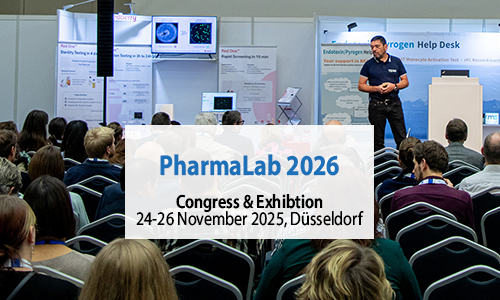Conference: Endotoxin and Pyrogen Testing - Pharmacopoeial and Scientific Developments
25/26 November 2025
Background & Objectives
Testing for endotoxins and pyrogens is a critical in-process and final release test for parenteral products. Over the past decades, various approaches have been developed to provide solutions for the wide range of products tested for endotoxins and pyrogens: RPT, LAL, MAT. With the LAL test method as an established, compendial methodology for bacterial endotoxins, including the harmonisation of EP, USP and JP, there is a solid basis for such testing. But the range of products to be tested is becoming broader and more complex as biotechnological and molecular biological techniques advance. Because of the importance of these tests, they are therefore under constant scrutiny by industry and regulators to ensure the effectiveness of the tests and the safe manufacture and release of products onto the market. Novel medicines such as cell and gene therapies and combinations with medical devices, as well as complex biopharmaceutical formulations, pose challenges for testing and require in-depth knowledge and expertise in the field of endotoxins and pyrogens. Furthermore, as the range of solutions offered by endotoxin testing vendors increases (e.g. recombinant factor C, ELISA-based test kits, automated LAL cartridge technology), it is important to gain a data-driven understanding of the benefits and limitations of each approach. Therefore, it is not only the discussions on low endotoxin recovery and endotoxin masking that are important. We should also focus on the need for future innovations within BET that provide solutions to current challenges with modern pharmaceutical and biopharmaceutical products for daily testing. In addition, automated solutions will play an important role, making issues of computer validation and data integrity important.
This conference will inform you about current developments in Endotoxin and Pyrogen testing, implementation of new methods as well as the practical use of established test methods like LAL for Endotoxin testing.
You become informed about
- International regulatory developments
- Feasibility of new and innovative products and methods
- Special issues like masking/LER
- Testing of critical substances
- Application of alternative testing methods – MAT, RFC and more
Target Audience
- Representatives of the regulatory and authorisation authorities
- Specialists in laboratories for Endotoxin and Pyrogen Testing
- QA/QC personnel in the biopharmaceutical environment
- Scientist in research and development of testing systems
- Project managers and outsourcing personnel
- Biologists, analytical chemists and biochemists interested in Endotoxins and Pyrogens products
Become part of the PharmaLab Congress 2026 – as a Speaker
The 14th PharmaLab will take place from 23 to 25 November 2026 at the ‘Darmstadtium’, the Congress Centre Darmstadt, near Frankfurt Airport. Please complete our online form to become part of it as a speaker. The deadline for submissions is 31 March 2026.
